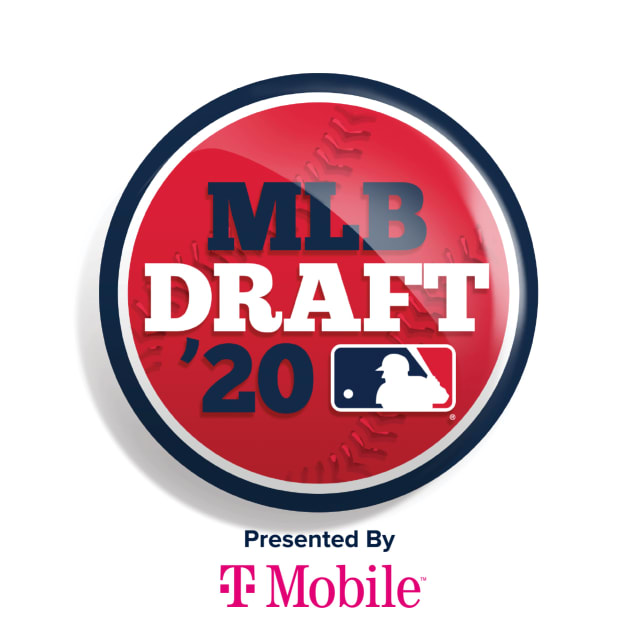These prospects raised their Draft stock
Though the NCAA Division I season lasted not quite a month and most high schools didn't play nearly that long, some prospects still found enough time to boost their Draft stock.
Spruce Creek High (Port Orange, Fla.) outfielder Zac Veen and Minnesota right-hander Max Meyer both jumped from late first-round consideration to potential top-10 picks this spring. Veen got stronger and further convinced scouts of his ability to hit for average and power, vaulting him to the top of the prep class. Meyer kicked his stuff up a notch in his first year as a full-time starting pitcher and struck out 46 in 27 2/3 mostly spectacular innings.
We released MLB Pipeline's updated Draft Top 150 last week and several prospects made huge moves, either rising up the list or joining it with a lofty ranking. Here are the players who made the biggest leaps:
On the preseason Top 100
Kyle Nicolas, RHP, Ball State (No. 95 to No. 60, up 35 spots)
Scouts knew Nicolas could overpower hitters with a mid-90s fastball that reaches 100 mph and a mid-80s slider that touches 90, but it was unclear whether he could harness his stuff well enough to remain a starter. He did a much better job of finding the strike zone and not overthrowing this spring, fanning 17 in seven one-hit innings against Sacred Heart in his final start.
This browser does not support the video element.
Dillon Dingler, C, Ohio State (No. 54 to No. 24, up 30 spots)
Nicolas' teammate on Ohio state baseball and basketball champions at Jackson High in 2016-17, Dingler flew under the radar a bit because a broken hamate bone hampered him as a sophomore and led to him not playing summer ball. He impressed this spring, showing better athleticism and arm strength than most catchers while also doing a better job of getting to his plus raw power.
Justin Foscue, 2B, Mississippi State (No. 58 to No. 32, up 26 spots)
The U.S. collegiate team's starter at second base last summer, Foscue didn't so much take a step forward this year as he reaffirmed the notion that he excels at making hard contact while controlling the strike zone and playing up the middle. College players with trustworthy bats and high floors are going to do well in the shortened 2020 Draft.
Burl Carraway, LHP, Dallas Baptist (No. 72 to No. 49, up 23 spots)
Carraway entered the year as the 2020 Draft's top relief prospect and retained that title by continuing to blow hitters away with 93-98 mph fastballs and downer curveballs. He's a potential closer who won't need much time in the Minors, something that makes him even more appealing in a year where there may not be much development time for prospects.
This browser does not support the video element.
Bobby Miller, RHP, Louisville (No. 48 to No. 26, up 22 spots)
Miller began to come on as a starter during the 2019 postseason, highlighted by nearly no-hitting East Carolina in the super-regionals, and continued to make strides during the fall and again this spring. He carved up hitters with a mid-90s fastball and a slider/cutter and a splitter/changeup in the mid-80s, and he did a better job of throwing strikes in his four starts this spring.
Off the preseason Top 100
Bryce Jarvis, RHP, Duke (unranked to No. 25)
Last year, Jarvis was a sophomore-eligible strike-thrower with a quality changeup who would have gone toward the end of the first 10 rounds if he were signable (and dropped to the Yankees in the 37th because he wasn't). He added 20 pounds of strength during the offseason, then saw his fastball jump to 92-96 mph and his curveball show flashes of becoming a plus pitch. His changeup and control rank among the best in the Draft, so the son of former big leaguer Kevin Jarvis could jump into the first round.
Seth Lonsway, LHP, Ohio State (unranked to No. 50)
Lonsway has one of the best curves in the Draft, combining power and depth, and he also boosted his velocity to 93-96 mph this spring. That combination helped him lead D-I in strikeout rate (21.0 per nine innings) and he might have pitched himself into the first round had he not walked eight in two innings against Stetson in his final start.
This browser does not support the video element.
Clayton Beeter, RHP, Texas Tech (unranked to No. 51)
Beeter led Texas Tech with eight saves in 2019 during his first year back from Tommy John surgery, then saw his stuff get better and his control dramatically improve when he transitioned to the rotation this spring. He doesn't come with much track record, but it's hard to argue with a 93-98 mph fastball, a pair of power breaking balls and flashes of a solid changeup.
Carson Tucker, SS, Mountain Pointe HS, Phoenix (unranked to No. 52)
Tucker is following the same path as his older brother Cole, who surged as a Mountain Pointe senior in 2014 en route to becoming a first-round pick by the Pirates. Carson has gotten bigger and stronger while showing the ability to make hard contact and play a dependable shortstop.
Justin Lange, RHP, Llano (Texas) HS (unranked to No. 57)
Lange's fastball has gone from the low 90s last summer to touching 95 mph at a September showcase to sitting at 94-95 and peaking at 100 this spring. He has one of the best bodies (6-foot-4, 220 pounds) and some of the best athleticism in this year's high school pitching crop, not to mention that newfound velocity and some signs of a plus mid-80s slider.
